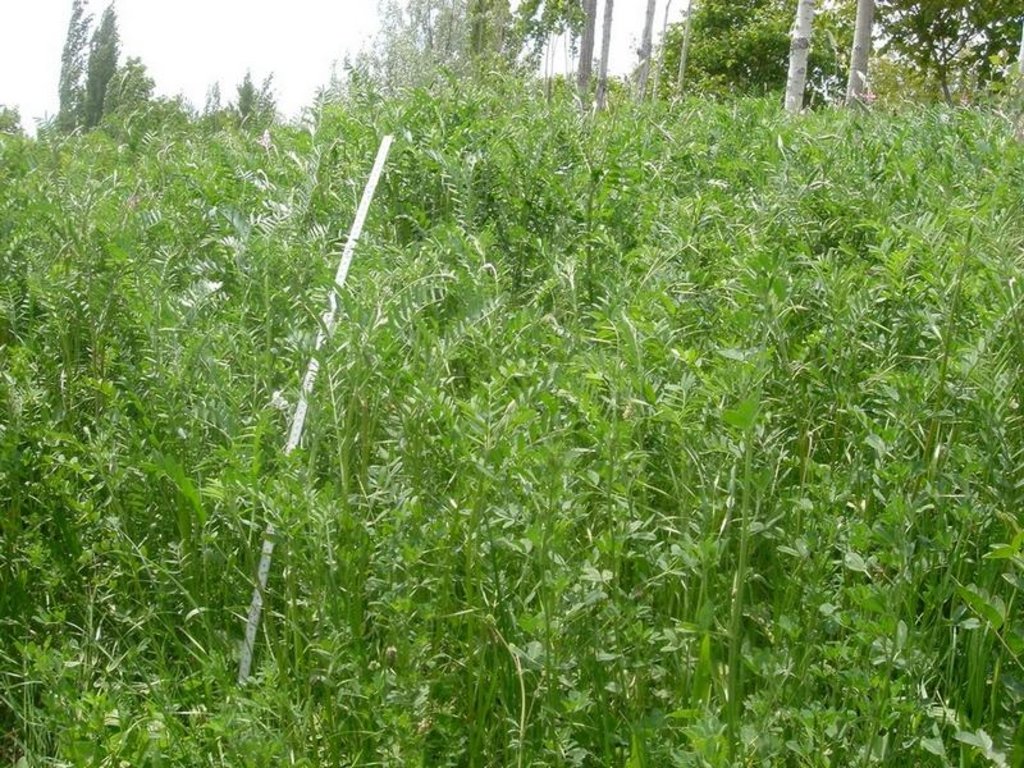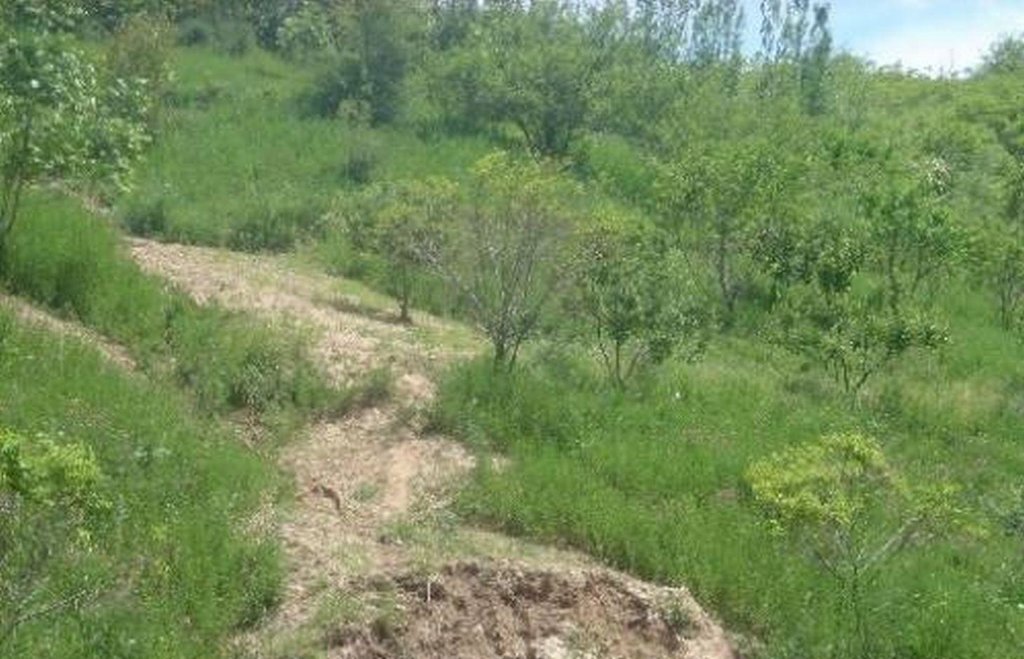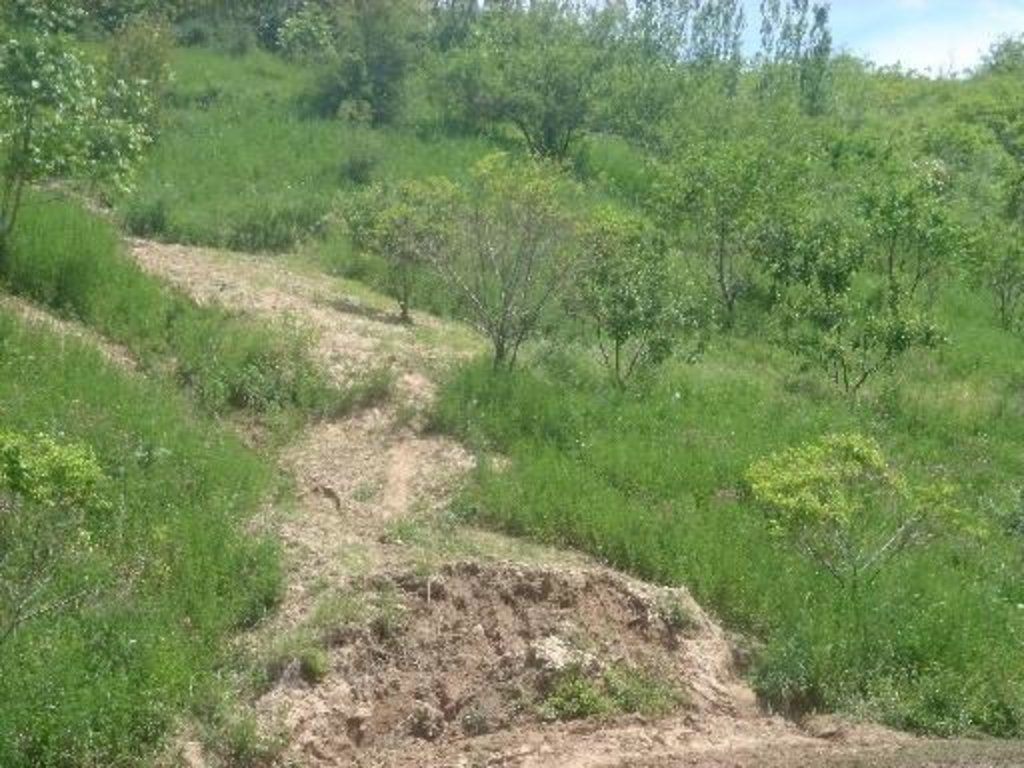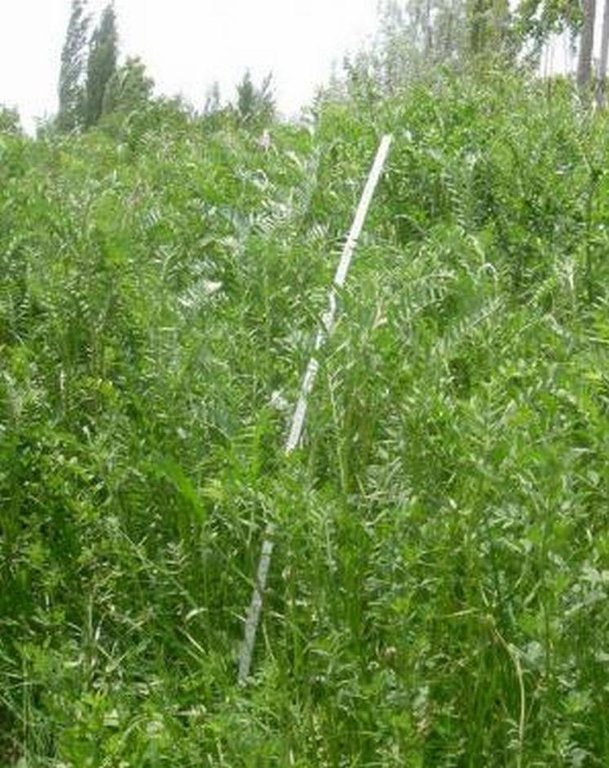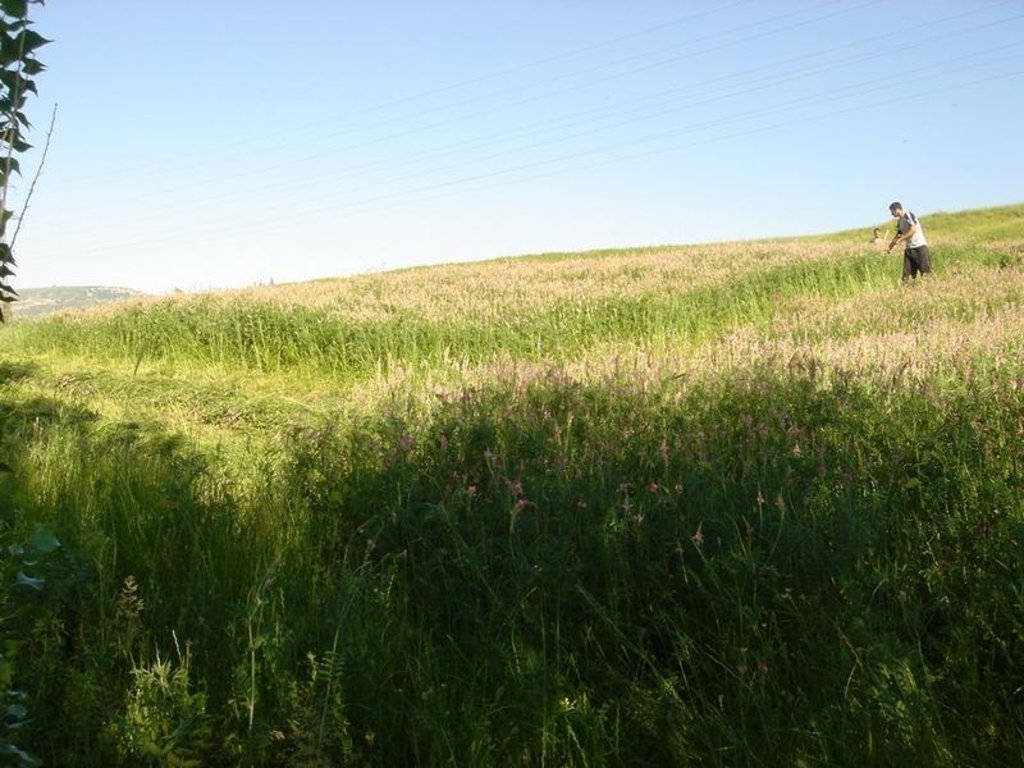Perennial Herbaceous Fodder Plants for Intact Canopy Cover [طاجيكستان]
- تاريخ الإنشاء:
- تحديث:
- جامع المعلومات: Erik Bühlmann
- المحرر: –
- المراجعون: Alexandra Gavilano, David Streiff
technologies_1000 - طاجيكستان
- Perennial Herbaceous Fodder Plants for Intact Canopy Cover: 21 أغسطس، 2019 (inactive)
- Perennial Herbaceous Fodder Plants for Intact Canopy Cover: 2 نوفمبر، 2021 (public)
- Perennial Herbaceous Fodder Plants for Intact Canopy Cover: 19 يوليو، 2017 (inactive)
- Perennial Herbaceous Fodder Plants for Intact Canopy Cover: 17 يوليو، 2017 (inactive)
- Perennial Herbaceous Fodder Plants for Intact Canopy Cover: 10 مارس، 2017 (inactive)
عرض الأقسام
توسيع الكل طي الكل1. معلومات عامة
1.2 تفاصيل الاتصال بالأشخاص الرئيسيين لمصدر المعلومات والمؤسسات المشاركة في تقييم وتوثيق التقنية
متخصص في الإدارة المستدامة للأراضي:
اسم المؤسسة (المؤسسات) التي سهلت توثيق/تقييم التقنية (إذا كان ذلك على صلة)
CDE Centre for Development and Environment (CDE Centre for Development and Environment) - سويسرااسم المؤسسة (المؤسسات) التي سهلت توثيق/تقييم التقنية (إذا كان ذلك على صلة)
NCCR North-South (NCCR North-South) - قرغيزستان1.3 الشروط المتعلقة باستخدام البيانات الموثقة من خلال WOCAT
يوافق جامع المعلومات والشخص (لاشخاص) الرئيسي لمصدر المعلومات على الشروط المتعلقة باستخدام البيانات الموثقة من خلال WOCAT:
نعم
2. وصف تقنيةالإدارة المستدامي للأراضي
2.1 وصف مختصر للتقنية
تعريف التقنية:
The cultivation of perennial herbaceous fodder plants to be used to fertilise unproductive cropland, and as permanent crops to be used to increase farm fodder production.
2.2 وصف تفصيلي للتقنية
الوصف:
Perennial herbaceous fodder plants such as alfa-alfa and esparzet are cultivated for fodder production and to fertilise unproductive cropland. Esparzet and alfa-alfa are often grown on steep slopes not suitable for annual cropping and on unproductive cropland as green manure. Alfa-alfa and esparzet can be harvested for 6-10 years without tillage.
Purpose of the Technology: These crops fix nitrogen, so they help fertilise the soil so that farmers can plough or harrow the land after 5-10 years to grow annual crops again.Alfa-alfa and esparzet can be harvested for 6-10 years without tillage (depending on the soil characteristics and inclination).
Establishment / maintenance activities and inputs: As yield from perennial herbaceous fodder plant fields starts declining around 4-6 years after the initial cultivation, farmers make up for declining yields by applying additional seeds. Alfa-alfa and esparzet can be harvested twice a year (3-4 harvests a year if irrigated), which results in a significantly higher annual farm fodder production in comparison to ordinary haymaking fields.
Natural / human environment: Some farmers reported problems in growing esparzet or alfa-alfa on slopes with an inclination of more than 30%. However, various examples have shown that these perennial herbaceous fodder plants can be cultivated on steep slopes of up to 60%. On steep slopes an extra amount of seeds must be applied to offset those lost downslope by washing before germinating. Alfa alfa and esparzet are effective in reducing soil erosion since their cultivation leads to an more intact ground cover throughout the year. Furthermore, not needing to tillage for up to ten years helps conserve the soil resources.
2.3 صور التقنية
2.5 البلد/المنطقة/المواقع التي تم تنفيذ التقنية فيها والتي يغطيها هذا التقييم
البلد:
طاجيكستان
المنطقة/الولاية/المحافظة:
RRS
مزيد من التفاصيل حول الموقع:
Faizabad Rayon
حدد انتشار التقنية:
- منتشرة بالتساوي على مساحة
إذا كانت المساحة الدقيقة غير معروفة، فيرجى الإشارة إلى المنطقة التقريبية المغطاة:
- 10-1 كم2
Map
×2.7 إدخال التقنية
حدد كيف تم إدخال التقنية:
- أثناء التجارب/الأبحاث
3. تصنيف تقنية الإدارة المستدامي للأراضي
3.1 الغرض الرئيسي ( الأغراض الرئيسية) للتقنية
- الحد من تدهور الأراضي ومنعه وعكسه
3.2 نوع (أنواع) استخدام الأراضي الحالية حيث يتم تطبيق التقنية

الأراضي الزراعية
- زراعة سنوية
- زراعة معمرة (غير خشبية)
الزراعة السنوية - حدد المحاصيل:
- محاصيل الألياف - كتان وقنب وغيرها
- الحبوب - قمح (ربيعي)
- محاصيل الأعلاف - البرسيم (الفصة)
- خضروات - اخرى
- esparzet
عدد مواسم الزراعة في السنة:
- 1
حدد:
Longest growing period in days: 210Longest growing period from month to month: Mar - Aug
التعليقات:
Major land use problems (compiler’s opinion): severe soil erosion (gullies and rills) and subsequent fertility decline on the cropland and overgrazed pastures
Major land use problems (land users’ perception): fertility decline, soil erosion and washing downslope of seeds before they can sprout.
Type of cropping system and major crops comments: If perennial herbaceous fodder plants are used as green manure, farmers will try to grow annual crops again 6-10 years after the initial cultivation. If crop yields remain low, farmers resort to growing herbaceous fodder plants as permanent crops.
3.4 إمدادات المياه
إمدادات المياه للأرض التي يتم تنفيذ التقنية عليها:
- بعلية
التعليقات:
Water supply also mixed rainfed - irrigated.
3.5 مجموعةالإدارة المستدامة للأراضي التي تنتمي إليها هذه التقنية
- تحسين الغطاء الأرضي/النباتي
3.6 التدابير التقنية في مجال إلادارة المستدامة للأراضي

التدابير الزراعية
- A1: الغطاء النباتي/التربة
- A7: أخرى

التدابير النباتية
- V2: الأعشاب والنباتات العشبية المعمرة

التدابير الإدارية
- M1: التغيير في نوع استخدام الأراضي
التعليقات:
Main measures: agronomic measures
Type of agronomic measures: green manure
3.7 الأنواع الرئيسية من تدهور الأراضي التي تناولتها التقنية

تآكل التربة بالمياه
- الوزن(Wt): فقدان التربة السطحية/تآكل السطح
- (Wg):الانجراف الخلجاني/ الخلجان

التدهور الكيميائي للتربة
- (Cn): تراجع الخصوبة وانخفاض محتوى المادة العضوية (غير ناتج عن الانجراف)
التعليقات:
Main type of degradation addressed: Cn: fertility decline and reduced organic matter content
Secondary types of degradation addressed: Wt: loss of topsoil / surface erosion, Wg: gully erosion / gullying
Main causes of degradation: deforestation / removal of natural vegetation (incl. forest fires) (Deforestation in the lower slopes), over-exploitation of vegetation for domestic use (Early in spring and late Fall grazing have led exploitation of natural grassland, because grass doesn't develop further.), overgrazing (Extensive grazing in the major issues in the region), change of seasonal rainfall (Lesser rainfall days), population pressure (Population increase puts more pressure on the natural resources, such as forests and grassland.)
Secondary causes of degradation: floods (Floods become common over the last 10 years)
3.8 منع أو حد أو عكس تدهور الأراضي
تحديد هدف التقنية فيما يتعلق بتدهور الأراضي:
- الحد من تدهور الأراضي
- اصلاح/إعادة تأهيل الأراضي المتدهورة بشدة
التعليقات:
Main goals: rehabilitation / reclamation of denuded land
Secondary goals: mitigation / reduction of land degradation
4. المواصفات الفنية، وأنشطة التنفيذ، والمدخلات، والتكاليف
4.1 الرسم الفني للتقنية
المواصفات الفنية (المتعلقة بالرسم الفني):
Technical knowledge required for field staff / advisors: low
Technical knowledge required for land users: low
Main technical functions: improvement of ground cover, increase in nutrient availability (supply, recycling,…)
Secondary technical functions: increase in organic matter
Green manure
Material/ species: esparzet, alfa alfa
Remarks: sowing: 55kg/ha (esparzet), 15kg/ha (alfa alfa)
4.2 معلومات عامة بخصوص حساب المدخلات والتكاليف
حدد العملة المستخدمة لحساب التكاليف:
- دولار أمريكي USD
اذكر متوسط تكلفة أجر العمالة المستأجرة في اليوم الواحد:
3.00
4.4 التكاليف والمدخلات اللازمة للتأسيس
| تحديد المدخلات | الوحدة | الكمية | التكاليف لكل وحدة | إجمالي التكاليف لكل مدخل | % من التكاليف التي يتحملها مستخدمو الأراضي | |
|---|---|---|---|---|---|---|
| معدات | tools | ha | 1,0 | 10,0 | 10,0 | 100,0 |
| المواد النباتية | seeds | ha | 1,0 | 30,0 | 30,0 | 100,0 |
| إجمالي تكاليف إنشاء التقنية | 40,0 | |||||
| إجمالي تكاليف إنشاء التقنية بالدولار الأمريكي | 40,0 | |||||
التعليقات:
Duration of establishment phase: 0 month(s)
4.5 الصيانة/الأنشطة المتكررة
| النشاط | التوقيت/الوتيرة | |
|---|---|---|
| 1. | sowing | spring / at initial cultivation |
| 2. | harrowing of land | spring / only at initial cultivation (perennial plants) |
| 3. | harrowing of land | spring / only at initial cultivation (perennial plants) |
| 4. | sowing | spring / at initial cultivation |
| 5. | harvesting (haymaking) | summer / two harvests: first harvest in June, second harvest in August |
| 6. | applying of additional seeds | spring / when yields start declining (4-6 years after initial cultivation) |
4.6 التكاليف والمدخلات اللازمة للصيانة/للأنشطة المتكررة (سنويًا)
| تحديد المدخلات | الوحدة | الكمية | التكاليف لكل وحدة | إجمالي التكاليف لكل مدخل | % من التكاليف التي يتحملها مستخدمو الأراضي | |
|---|---|---|---|---|---|---|
| العمالة | harrowing of land | ha | 1,0 | 18,0 | 18,0 | 100,0 |
| العمالة | haymaking | ha | 1,0 | 12,0 | 12,0 | 100,0 |
| إجمالي تكاليف صيانة التقنية | 30,0 | |||||
| إجمالي تكاليف صيانة التقنية بالدولار الأمريكي | 30,0 | |||||
التعليقات:
Machinery/ tools: harrow, scythe
4.7 أهم العوامل المؤثرة على التكاليف
قدم وصفا لأهم العوامل التي تؤثر على التكاليف:
costs per hectare under following assumptions: esparzet: 50kg/ha (price per kg: 0.65 USD) or
alfa alfa: 15kg/ha (price per kg: 2 USD)
5. البيئة الطبيعية والبشرية
5.1 المناخ
هطول الأمطار السنوي
- < 250 مم
- 251- 500 ملم
- 501 - 750ملم
- 1,000-751 ملم
- 1,500-1,100 ملم
- 2,000-1,500 ملم
- 3,000-2,001 ملم
- 4,000-3,100 ملم
- > 4000 ملم
المنطقة المناخية الزراعية
- شبه رطبة
- شبه قاحلة
growing period 180-210 days
5.2 طوبوغرافيا
متوسط الانحدارات:
- مسطح (0-2%)
- بسيط (3-5%)
- معتدل (6-10%)
- متدحرج (11-15%)
- تلال (16-30%)
- شديدة الانحدار(31-60%)
- فائقة الانحدار (>60%)
التضاريس:
- هضاب/سهول
- أثلام مرتفعة
- المنحدرات الجبلية
- منحدرات التلال
- منحدرات في السفوح
- قاع الوادي
المنطقة الارتفاعية:
- 100-0 متر فوق سطح البحر
- 500-101 متر فوق سطح البحر
- 1,000-501 متر فوق سطح البحر
- 1,500-1,001 متر فوق سطح البحر
- 2,000-1,501 متر فوق سطح البحر
- 2,500-2,100 متر فوق سطح البحر
- 3,000-2,501 متر فوق سطح البحر
- 4,000-3,001 متر فوق سطح البحر
- > 4000 متر فوق سطح البحر
التعليقات والمواصفات الإضافية بشأن التضاريس:
Altitudinal zone: Also 1,501-2,000 m a.s.l.
Landforms: Also valles floors
Slopes on average: Also steep
5.3 التربة
متوسط عمق التربة:
- ضحل جدًا (0-20 سم)
- ضحلة (21-50 سم)
- متوسطة العمق (51-80 سم)
- عميقة (81-120 سم)
- عميقة جدًا (> 120 سم)
قوام التربة (التربة السطحية):
- متوسط ( طميي، سلتي)
- ناعم/ثقيل (طيني)
المواد العضوية في التربة السطحية:
- متوسطة (1-3%)
- منخفضة (<1%)
إذا كان متاحًا، قم بإرفاق وصف كامل للتربة أو تحديد المعلومات المتوفرة، على سبيل المثال نوع التربة، الرقم الهيدروجيني/ درجة حموضة التربة، قدرة التبادل الكاتيوني، النيتروجين، الملوحة وما إلى ذلك.
Soil fertility: very high
Soil drainage / infiltration: medium - good
5.6 خصائص مستخدمي الأراضي الذين يطبقون التقنية
التوجه السوقي لنظام الإنتاج:
- الكفاف (الإمداد الذاتي)
- مختلط (كفاف/ تجاري)
الدخل من خارج المزرعة:
- >50% من إجمالي الدخل
المستوى النسبي للثروة:
- متوسط
- ثري
مستوى المكننة:
- عمل يدوي
- ميكانيكية/ مزودة بمحرك
اذكر الخصائص الأخرى ذات الصلة لمستخدمي الأراضي:
Annual population growth: 1% - 2%
5% of the land users are rich and own 15% of the land.
75% of the land users are average wealthy and own 70% of the land.
Off-farm income specification: In general, all farmers (including those applying SWC technologies) are highly dependent on off-farm income which in most cases is earned in Russia either by themselves or by their relatives.
Level of mechanization: Ploughing is carried out by tractor whenever possible, but animal traction als existent.
Market orientation of production system subsistence (self-supply): subsistence, but surpluses sold
5.7 متوسط مساحة الأرض التي يستخدمها مستخدمو الأراضي الذين يطبقون التقنية
- < 0.5 هكتارا
- 0.5 - 1 هكتار
- 1 -2 هكتار
- 2 - 5 هكتار
- 5 - 15 هكتار
- 15 - 50 هكتار
- 50 - 100هكتار
- 500-100 هكتار
- 1,000-500 هكتار
- 10,000-1,000 هكتار
- > 10,000 هكتار
التعليقات:
Average area of land owned or leased by land users applying the Technology: Also 0.5-1 ha
Households with 1-2 ha are depending on available work force, labour is limiting factor
5.8 ملكية الأراضي، وحقوق استخدام الأراضي، وحقوق استخدام المياه
ملكية الارض:
- دولة
حقوق استخدام الأراضي:
- مؤجر
6. الآثار والتصريحات الختامية
6.1 الآثار التي أظهرتها التقنية في الموقع
الآثار الاجتماعية والاقتصادية
الإنتاج
إنتاج الأعلاف
التعليقات/ حدد:
two (if irrigated three) harvests possible
جودة العلف
منطقة الإنتاج
التعليقات/ حدد:
loss of anual cropland for food crop production
الدخل والتكاليف
دخل المزرعة
الآثار الاجتماعية والثقافية
التخفيف من حدة الصراع
الآثار الايكولوجية
التربة
غطاء التربة
فقدان التربة
الآثار الايكولوجية الأخرى
soil fertility
biodiversity
6.3 تعرض التقنية وحساسيتها لتغير المناخ التدريجي والظواهر المتطرفة/الكوارث المرتبطة بالمناخ (كما يراها مستخدمو الأراضي)
تغير مناخ تدريجي
تغير مناخ تدريجي
| الموسم | زيادة أو نقصان | كيف تتعامل التقنية مع ذلك؟ | |
|---|---|---|---|
| درجة الحرارة السنوية | زيادة | جيدا |
الظواهر المتطرفة / الكوارث المرتبطة بالمناخ
الكوارث الجوية
| كيف تتعامل التقنية مع ذلك؟ | |
|---|---|
| عاصفة ممطرة محلية | جيدا |
| عاصفة هوائية محلية | جيدا |
الكوارث المناخية
| كيف تتعامل التقنية مع ذلك؟ | |
|---|---|
| جفاف | جيدا |
الكوارث الهيدرولوجية
| كيف تتعامل التقنية مع ذلك؟ | |
|---|---|
| فيضان عام (نهر) | ليس جيدا |
العواقب الأخرى المتعلقة بالمناخ
العواقب الأخرى المتعلقة بالمناخ
| كيف تتعامل التقنية مع ذلك؟ | |
|---|---|
| انخفاض فترة النمو | جيدا |
6.4 تحليل التكلفة والعائد
كيف يمكن مقارنة العوائد نسبة لتكاليف الإنشاء (من وجهة نظر مستخدمي الأراضي)؟
عوائد قصيرة الأجل:
إيجابي
عوائد طويلة الأجل:
إيجابي
كيف تتم مقارنة العوائدمع كلفة الصيانة/التكاليف المتكررة (من وجهة نظر مستخدمي الأراضي)؟
عوائد قصيرة الأجل:
إيجابي
عوائد طويلة الأجل:
إيجابي
6.5 اعتماد التقنية
إذا كان متاحًا، قم بتحديد الكمية (عدد الأسر المعيشية و/أو المساحةالمغطاة):
NA
من بين جميع الذين تبنوا التقنية، كم عدد الذين فعلوا ذلك بشكل تلقائي، أي دون تلقي أي حوافز مادية/مدفوعات؟:
- 91-100%
التعليقات:
100% of land user families have adopted the Technology without any external material support
Comments on spontaneous adoption: estimates
There is a little trend towards spontaneous adoption of the Technology
Comments on adoption trend: Instead of leaving unproductive cropland uncultivated, some farmers have recently started cultivating alfa alfa or esparzet. Often esparzet is preferred by farmers to alfa alfa, since espartzet-hay is easier to feed to animals because of its hollow stem.
6.7 نقاط القوة / المزايا / الفرص التي توفرها التقنية
| نقاط القوة/ المزايا/ الفرص من وجهة نظر مستخدمي الأراضي |
|---|
| increase of fodder production |
| fertilises unproductive cropland |
| easy to feed to cows in winter |
| in comparison to ordinary hayfields, two to three harvests are possible |
| only a few inputs required |
| نقاط القوة/ المزايا/ الفرص من وجهة نظر جامع المعلومات أو غيره من الاشخاص الرئيسيين لمصدر المعلومات |
|---|
|
increase farm production of good quality fodder How can they be sustained / enhanced? If land is irrigated three, (instead of two) harvests are possible each year |
|
reduces soil erosion through an intact ground cover being present throughout the year fertilizes soil through nitrogen fixation easy to implement, easy to maintain |
| involves only little costs for establishment, almost no inputs for maintainance |
| can be used to improve canopy cover on uncultivated (abandoned) cropland |
|
no tillage necessary for 6-10 years How can they be sustained / enhanced? additional application of seeds when yields start declining |
6.8 نقاط ضعف / مساوىء / مخاطر التقنية وسبل التغلب عليها
| نقاط الضعف/ المساوىء/ المخاطر من وجهة نظر مستخدم الأراضي | كيف يمكن التغلب عليها؟ |
|---|---|
| loss of possible cropland | higher return from fodder production than for limited crop production on degraded land |
| نقاط الضعف/ المساوىء/ المخاطر من وجهة نظر جامع المعلومات أو غيره من الاشخاص الرئيسيين لمصدر المعلومات | كيف يمكن التغلب عليها؟ |
|---|---|
| loss of land which could have been used for production of food crops | cultivate perennial herbaceous fodder plants especially on land which is unsuitable for production of annual crops |
| increase of farm fodder production allows farmers to have more animals which ultimately will lead to further overgrazing of pastures | keep animals in stables - cut and carry system |
7. المراجع والروابط
7.1 طرق جمع/مصادر المعلومات
الروابط والوحدات المواضيعية
توسيع الكل طي الكلالروابط
لا يوجد روابط
الوحدات المواضيعية
لا يوجد وحدات مواضيعية



